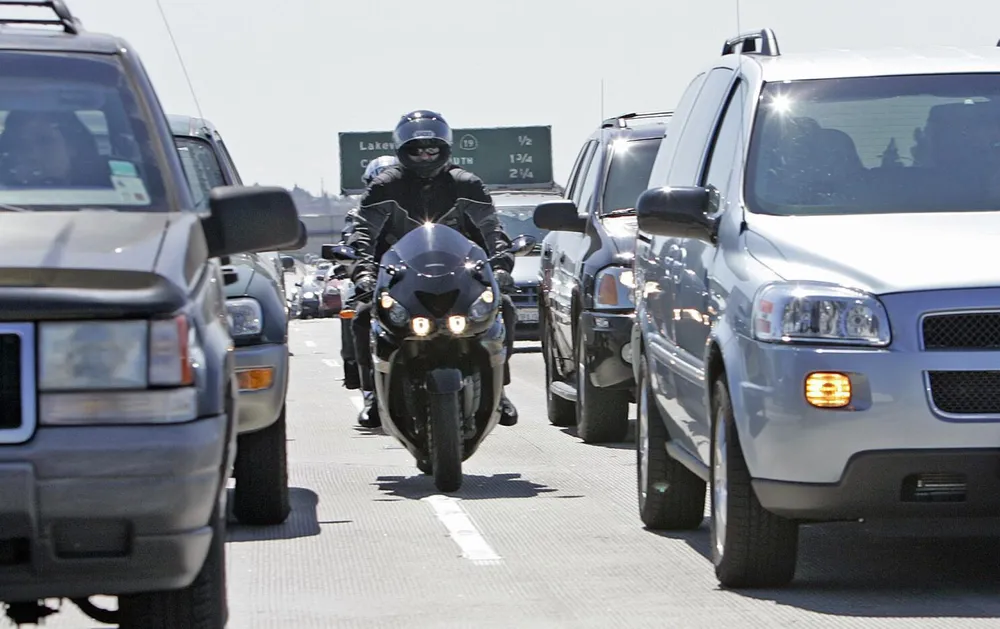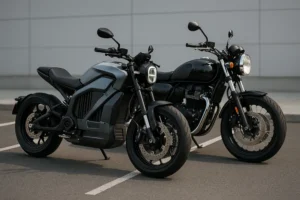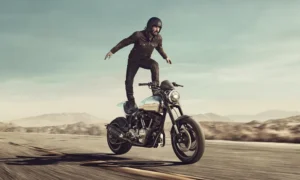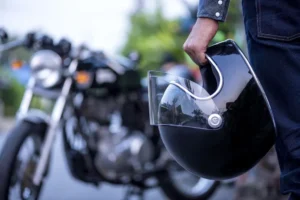Lane splitting is one of the most hotly debated motorcycle practices in the United States. In simple terms, lane splitting occurs when a motorcyclist rides between two lanes of slow-moving or stopped traffic, often on highways or in congested city areas.
California is the only state that has formally legalized lane splitting, recognizing it as a legitimate riding practice under specific conditions. Elsewhere, however, the maneuver is either illegal, unregulated, or vaguely defined, leaving riders uncertain and law enforcement inconsistent.
In this article, we’ll explain what lane splitting is, why California chose to legalize it, the arguments for and against the practice, and what the future may hold for lane-splitting laws in the U.S.
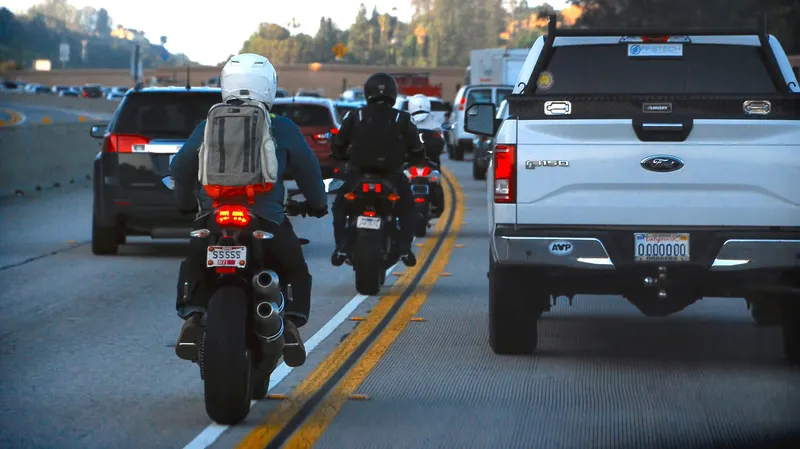
What Is Lane Splitting?
Lane splitting, sometimes called white-lining or filtering, is when a motorcyclist passes between cars traveling in the same direction, typically in heavy traffic. It’s different from lane sharing, where two motorcycles ride side-by-side in the same lane, and shoulder surfing, where riders pass using the shoulder of the road (which is generally illegal everywhere).
In California, the term lane splitting refers specifically to riding between lanes of stopped or slow-moving traffic moving in the same direction.
The Legal Status of Lane Splitting in California
California formally legalized lane splitting in 2016 with Assembly Bill 51, which directed the California Highway Patrol (CHP) to develop guidelines for safe lane splitting. Under these guidelines:
-
Lane splitting should only be done at speeds no more than 10 mph faster than surrounding traffic.
-
It is safest when traffic is moving at 30 mph or slower.
-
Riders are advised not to split lanes at high speeds or between large vehicles such as buses and trucks.
The decision to legalize lane splitting came after decades of informal tolerance. For years, California law did not explicitly prohibit lane splitting, but it was also not clearly permitted. Riders used it frequently in traffic, and CHP eventually recognized the practice as safe under controlled conditions.
Lane Splitting in Other States
Outside California, lane splitting remains illegal in most of the United States. However, there are some exceptions and evolving laws:
-
Utah allows a form of lane filtering, which is similar to lane splitting but limited to intersections with stopped traffic.
-
Montana passed a law in 2021 permitting lane filtering under specific conditions, such as on roads with speed limits of 50 mph or less.
-
Arizona legalized lane filtering in 2022, but only when traffic is stopped and the motorcycle is traveling at 15 mph or less.
These laws are more restrictive than California’s but represent a growing acceptance of the practice in certain contexts.
Why Lane Splitting Is Controversial
The controversy around lane splitting lies in the clash between safety concerns and efficiency benefits.
Arguments in Favor of Lane Splitting
-
Reduced Traffic Congestion – Motorcycles moving through traffic free up space, easing gridlock in cities.
-
Lower Risk of Rear-End Collisions – Stopped motorcyclists are especially vulnerable to being rear-ended by distracted drivers. Lane splitting allows riders to move out of harm’s way.
-
Environmental Benefits – Keeping motorcycles moving reduces idling, which lowers emissions and fuel consumption.
-
Global Precedent – Lane splitting is legal and widely practiced in countries like France, Spain, Italy, and much of Asia.
Arguments Against Lane Splitting
-
Driver Confusion – Many car drivers are unfamiliar with lane splitting and may react unpredictably when a motorcycle passes between lanes.
-
Potential for Side-Swipe Accidents – Cars changing lanes suddenly pose a significant risk to riders.
-
Enforcement Challenges – Police officers may struggle to determine when lane splitting is done safely or recklessly.
-
Perception of Recklessness – To non-riders, lane splitting can appear dangerous, reinforcing stereotypes of motorcyclists as risk-takers.
Safety Studies on Lane Splitting
Research from the University of California, Berkeley found that lane splitting, when done at speeds under 50 mph and when motorcyclists travel no more than 15 mph faster than traffic, is relatively safe. Riders who split lanes under these conditions were significantly less likely to be rear-ended, sustain head injuries, or suffer fatal injuries compared to riders who did not split lanes.
The study also highlighted that the greatest risk comes from speeding or splitting lanes at unsafe differentials, especially when surrounding traffic is moving at higher speeds.
Cultural Differences in Lane Splitting
Globally, lane splitting is not nearly as controversial as it is in the U.S. In countries such as France, Italy, Spain, and Indonesia, lane splitting (or filtering) is part of everyday riding culture. Drivers expect motorcycles to move between lanes, and traffic laws accommodate the practice.
In the U.S., however, car-centric road culture and lack of rider familiarity among drivers create more tension. Many American drivers view lane splitting as aggressive or unsafe, even when studies show it can improve safety.
The Insurance and Legal Angle
From a legal perspective, being involved in a crash while lane splitting in California is not automatically considered the rider’s fault. Courts and insurance adjusters evaluate whether the rider was lane splitting safely and legally. For example, if a motorcyclist was weaving at high speed or splitting lanes recklessly, liability may shift toward the rider.
In states where lane splitting is illegal, the rider will almost always be considered at fault if a crash occurs while splitting lanes. This can drastically affect insurance payouts and potential injury claims.
The Future of Lane Splitting Laws
The momentum behind lane splitting and lane filtering is slowly building in the U.S. Utah, Montana, and Arizona have all taken steps toward legalization in limited forms. Motorcycle advocacy groups continue to push for more states to adopt California-style rules.
However, widespread adoption may take years. Opponents cite public safety concerns and political hesitation. For now, California remains the only state where lane splitting is explicitly legal statewide.
Conclusion
Lane splitting sits at the crossroads of efficiency, freedom, and safety. California’s decision to legalize it has paved the way for studies and legislative debates across the country. For riders, understanding lane splitting laws is critical not only for staying safe but also for avoiding costly legal consequences.
Whether other states follow California’s lead remains to be seen, but one thing is clear: lane splitting will continue to spark strong opinions from riders, drivers, lawmakers, and safety advocates alike.

